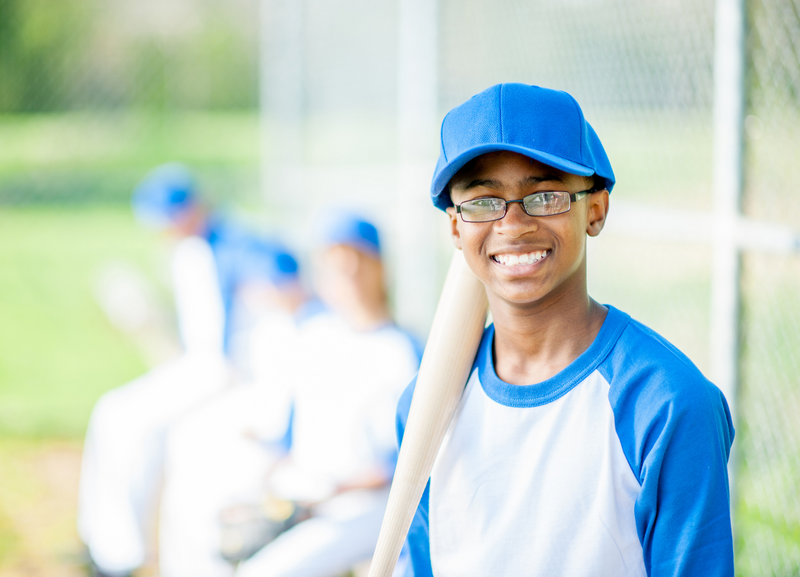The Ultimate Guide to Buying a Youth Baseball Bat
The bat your child swings now could be a huge help or hindrance in developing sound swing mechanics that will propel them to the next level. Follow the tips in this guide to choose the right youth baseball bat for your aspiring Little Leaguer or developing middle school player.
WOOD VS. METAL BASEBALL BATS FOR KIDS
Youth bats can be made from wood or metal, and each have their own unique properties. Which should you buy to help your child develop the swing that will set them apart at the next level?
Metal bats may be popular, but they can hold your All-Star’s development back. Metal bats can compensate for poor technique, and their super-sized sweet spots can turn would-be outs into hits. makes it more difficult for kids to identify weaknesses in their swing.
A wood bat, on the other hand, is better balanced and properly weighted, which is critical to developing a good swing. Wood bats help young players do more than make contact with the ball—they help kids learn the fundamental mechanics that produce great, level swings. Practicing with wood bats gives them the opportunity to work with their coach to fix these problems before they start playing competitively at higher levels.
Does your little leaguer dream of making it to the Show? Does your middle school player want to make varsity and earn scholarship playing at the next levels? A properly weighted, well-crafted wood baseball bat could be the best investment you can make to develop their game.
BASEBALL BAT WEIGHT AND LENGTH
Youth wood bats also come in a variety of lengths and weights. That means that kids of all ages and sizes can find the right-sized bat. Bat weight is the most important thing to consider when buying a youth bat.
A heavy bat may cause youth players to drop their shoulders and turn their wrist, resulting in slowed bat speed and poor contact with the ball. Often, a heavy bat swing for a youth looks like he or she is chopping at the ball. Swinging a bat that’s too heavy will hinder players learning the proper swing technique that comes from using a wood bat.
On the other hand, using a bat that’s too light, as is the case with most metal bats, also prevents little leaguers from developing a good swing. Typically, their swing is looping and golf-like from low to high. While lighter bats make for fast bat speed, the upward swing produces many fly balls. When you get a properly weighted bat of the appropriate length, the benefits of wood will appear in your youth’s at bat: a nice level swing turns fly balls into line drives.
As for finding the right length for your player, check out this handy sizing chart!
YOUTH BATS (2.25” DIAMETER BARREL)
The right type of youth wood baseball bat depends on the hitter. Phoenix Bats makes 3 youth models all made from birch wood, which is best suited for players swinging their first wood bat. All Phoenix Bats youth wood bats meet or exceed USABat and Little League standards for game use.
The K455 is our lightest wood bat. It’s shaped like an adult bat, but its light weight makes it great for younger players aged 5–9. Its fast transition from barrel to handle makes it a great tool for developing a fundamentally sound swing with a pro-style bat.
The K240, which we recommend for 5–11 year olds, features a slow transition from barrel to handle. This slow transition gives the bat more thickness and more forgiveness on balls batted on the lower part of the barrel towards the decal. It’s perfect for players who are new to wood and still learning to find the sweet spot.
The K271 is our heaviest youth wood bat, so it’s great for the young power hitter aged 10–11. Like the K240, the K271 also features a longer barrel that gives more surface area to hit and adds durability with more powerful swings.
TRANSITION BATS (2.5” DIAMETER BARREL)
Transition bats are designed for kids aged 12–13 who’ve outgrown their youth bat. Transition bats have a full-size barrel, so they’re heavier than youth bats, but still 2–3 ounces lighter than a pro-style bat they’ll be swinging in high school and beyond. Phoenix Bats makes 3 styles of transition bats that we can fashion from ash, birch or maple wood. Again, all Phoenix Bats meet or exceed USABat and Little League standards for game use.
The DR100 is a pro-style transition bat with a fast transition from barrel to handle and a slightly flared knob. Available in ash or birch, the DR100 is great for developing a level swing and mastering form.
The DR5S features the same barrel design as the DR100, but it has a standard, non-flared knob, just like a metal bat. The DR5S is available in ash, birch or maple.
The DR271, like the K271, is designed for the power hitter. It has a slower transition from barrel to handle that gives more hitting area, adding weight and durability. The DR271 is available in ash, birch or maple.
HIT IT OUT OF THE PARK
The type of bat your kid uses impacts swing velocity, contact with the ball, where the ball will go, and how far the ball will travel. It even affects how quickly your all-star starts the run to first base. Because the bat affects so many facets of the game, choosing the right bat, in the right length, at the right weight is essential.
Buying the right youth wood bat will help your child develop the swing mechanics that will place them at a competitive advantage at the next level. That’s a homerun in our book.

